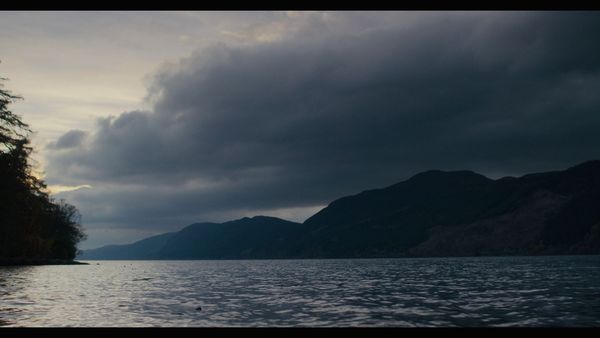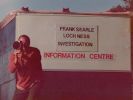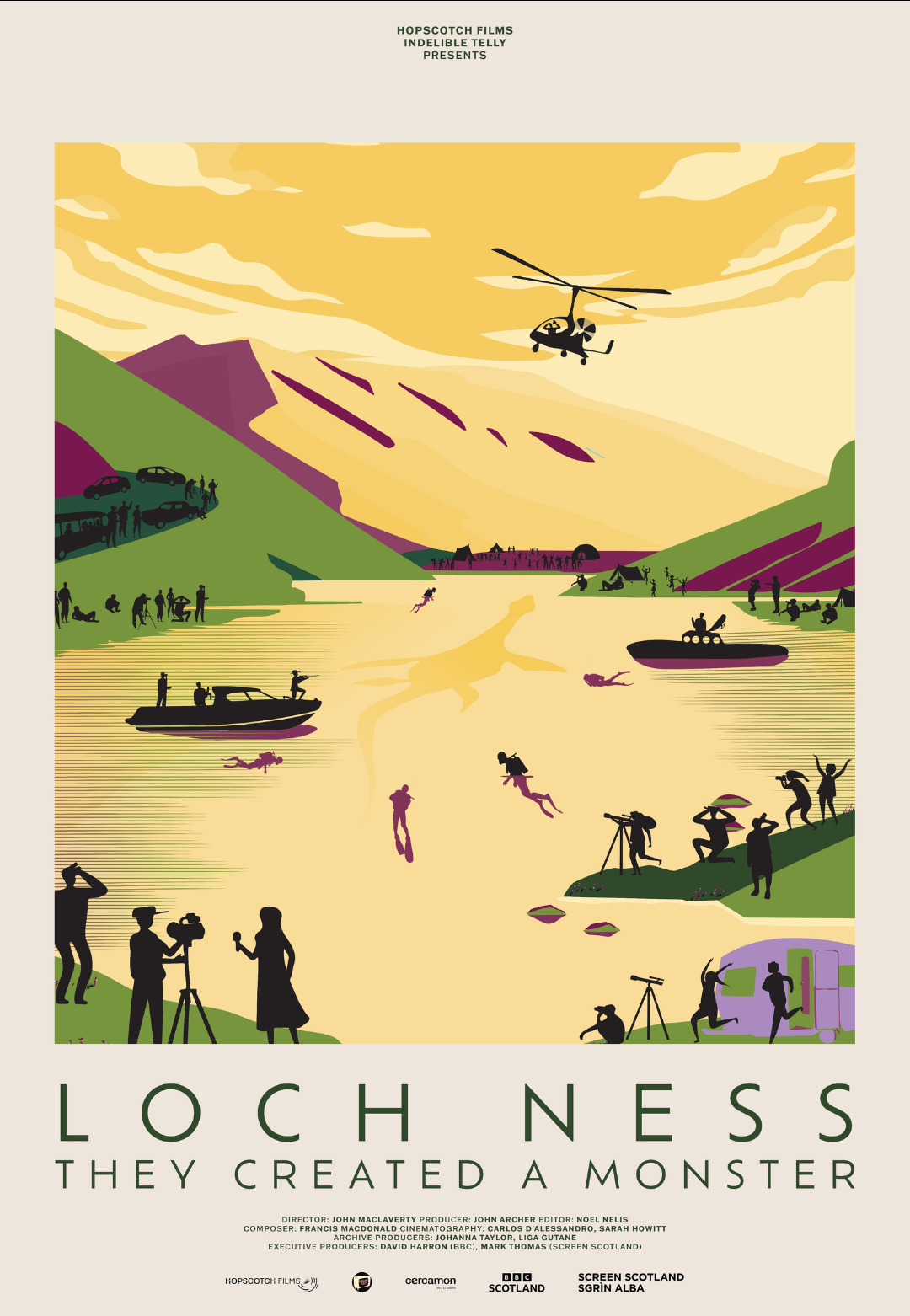Eye For Film >> Movies >> Loch Ness: They Created A Monster (2023) Film Review
Loch Ness: They Created A Monster
Reviewed by: Jennie Kermode

Stories of the Loch Ness Monster go back at least as far as 565, when St Columba is said to have given it a stern talking-to after it contributed to the drowning of a local man. People living around the loch never really ceased to talk about it. In the 1970s, however, there was a huge boom in interest from outsiders. This documentary by John MacLaverty asks how it came about and tells the stories of some of the people who dedicated their lives to the search for the mysterious beast.
“Some things have to be believed to be seen,” is the phrase that echoes throughout. MacLaverty is careful to set the scene. This was an era when the struggles associated with world wars and post-war reconstruction were fading into the past and people were focusing on the future. It was a period during which people were becoming passionate about the possibilities offered by science, but also about esoteric ways of thinking which, aside from a brief bloom at the start of that century, had been little-explored in the West. At the same time, however, improved telecommunications, increased ease of travel and early satellite imaging meant that the world was becoming smaller and more familiar, its mysteries increasingly resolved.

There are 7.4 cubic kilometres of water in Loch Ness – more fresh water than in the whole of England and Wales. In places it is 227 metres deep. That’s a lot of space in which something could hide. Today it has been pretty thoroughly mapped out with radar, but in the Seventies that wasn’t the case. It seemed to present one of the world’s last great mysteries, and people flocked there in the hope of being the lucky one would who get a photograph or video with proved, once and for all, that the monster was real.
The extent of this interest is impressive. Monster hunter Yoshio Kou insists that all Japanese children have learned about it by the age of four. His mission in the Seventies was one of the more impressive. With corporate sponsorship and a sizeable team, he set out to capture “four or five” of the monsters, intending to give one to Princess Anne as a wedding present.
Frank Searle’s approach was a little different. An ex-military man described as a “short, plump Cockney,” who was prone to throwing his weight around, he lived full time on the shores of the loch, where he claimed to have seen the monster multiple times. He wrote books and newsletters and made a good living from it, as well as acquiring a string of significantly younger girlfriends. One of them, Lieve Peten, gives her side of the story, and there are a few revelations, from her and others, which put his heavily self-promoted legend in a different light.
We also learn about others, such as Tim Dinsdale, who spend decades living in a boat out on the loch – a feat not really given its due here, as the documentary doesn’t address how vicious the water can be in bad weather. There’s a look at the Loch Ness Investigation Bureau, which initially gained authority by having its name painted on the side of a van, and at the more scientific approach was taken by Bob Rines and his team from the Academy of Applied Sciences, who used sonar in their search – but just how seriously should they have been taken? MacLaverty builds up the story layer by layer, encouraging viewers to exercise their critical thinking skills and try to identify problems before he reveals them.
Though he does a good job of cataloguing the major Nessie ‘sightings’ of the era, McLaverty is perhaps more interested in the psychology of the monster hunters themselves, and this is where the documentary will appeal to a wider spectrum of viewers. There is mention of how a visiting exorcist – at a stage when some people were theorising that the monster could be supernatural – expressed concern about mental deterioration amongst them. This is reflected in the expressions we see on their faces in the extensive archive footage, and in stories about the breakdown of relations between them as optimism about finding their quarry gradually gave way to despair. With knife threats, a Molotov cocktail and a mysterious disappearance all coming into the picture, there’s plenty to reassure viewers of the old adage that man is the real monster.
Through it all, the locals, many of whom attest to having seen the monster themselves but don’t think of it as a big deal, maintain a steady business supplying these visitors with everything from groceries to Nessie stuffed toys. As one participant points out, “The shopkeepers don’t really care whether the monster exists or not, as long as the riddle remains.”
Reviewed on: 10 Nov 2023

















